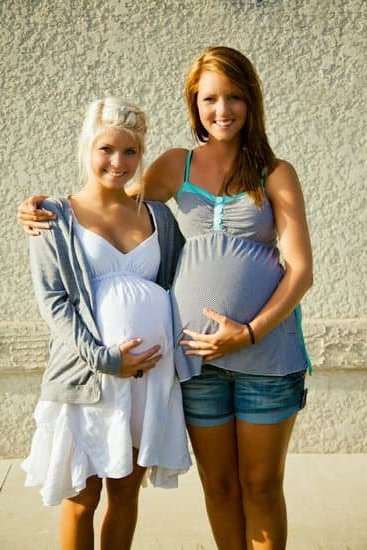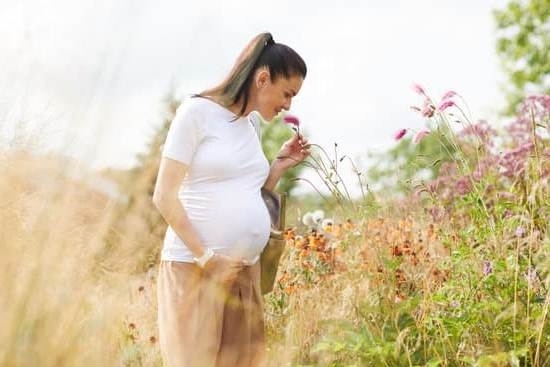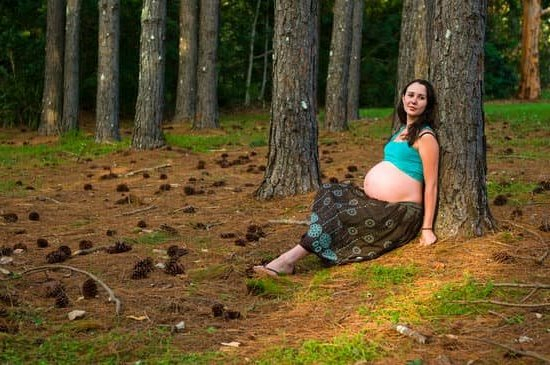Are you wondering how many days after period is safe to avoid pregnancy? Understanding the menstrual cycle and ovulation is crucial for individuals who wish to prevent unplanned pregnancies. The concept of the fertile window and safe days plays a vital role in family planning and contraception. This article will provide an overview of the menstrual cycle, explain ovulation and the fertile window, and discuss the concept of safe days to avoid pregnancy.
The menstrual cycle and fertility are closely linked, with ovulation being a key factor in determining when pregnancy is most likely to occur. A typical menstrual cycle lasts 28 days, with distinct phases including the menstrual phase, follicular phase, ovulation, and luteal phase. Understanding these phases is essential for identifying the fertile window.
Ovulation marks the release of an egg from the ovaries, signaling the start of the fertile window. During this time, conception is most likely to occur if unprotected intercourse takes place. However, knowing when it’s safe to engage in sexual activity without risking pregnancy can help individuals make informed decisions about their reproductive health.
Menstrual Cycle and Fertility
The menstrual cycle plays a crucial role in fertility and understanding its phases can be helpful in determining the safe days after a period to avoid pregnancy. The typical menstrual cycle lasts for about 28 days, although this can vary from woman to woman. It consists of four main phases: the menstrual phase, follicular phase, ovulation, and luteal phase.
During the menstrual phase, which usually lasts for about 3 to 7 days, the uterine lining is shed. Following this is the follicular phase, where the body prepares for ovulation by stimulating the growth of follicles in the ovaries. Ovulation then occurs around day 14 of the cycle, when a mature egg is released from the ovary into the fallopian tube. This is considered to be the most fertile time of a woman’s cycle.
Understanding these phases can help in determining how many days after a period is safe to avoid pregnancy. The fertile window generally spans around 6 days leading up to and including ovulation. This includes the lifespan of both the egg (12-24 hours) and sperm (up to 5 days) in a woman’s body. Therefore, it’s important to take this into account when considering safe days for preventing pregnancy.
- Factors that influence the length of the fertile window
- Understanding how ovulation plays a key role in determining safe days
- The importance of tracking your menstrual cycle for effective contraception
Ovulation and Fertile Window
Ovulation is a key factor in determining the fertile window and understanding how many days after a period is safe to avoid pregnancy. Ovulation typically occurs around the middle of the menstrual cycle, which for most women with a 28-day cycle, would be around day 14.
During ovulation, an egg is released from the ovary and is available for fertilization for about 12-24 hours. However, it’s important to note that sperm can survive in the female reproductive tract for up to 5 days, so the fertile window actually extends several days before ovulation.
The fertile window refers to the timeframe during a woman’s menstrual cycle when sexual intercourse could lead to pregnancy. It typically spans about six days, including the day of ovulation and the five days leading up to it. This is why it’s crucial to understand ovulation and the concept of the fertile window when trying to prevent unintended pregnancy.
Determining safe days after a period to avoid pregnancy can vary depending on the length of a woman’s menstrual cycle and the regularity of her periods. For those with regular cycles, there are methods such as calendar tracking, basal body temperature monitoring, and observing changes in cervical mucus that can help identify potential fertile days accurately.
However, it’s important to remember that these methods do have limitations and may not be as effective for everyone. Seeking advice from a healthcare provider on contraception options tailored to individual needs is always beneficial.
| Ovulation Information | Details |
|---|---|
| Ovulation Timing | Around day 14 of a typical 28-day cycle |
| Fertile Window Duration | About six days including day of ovulation |
| Contraception Methods | Calendar tracking, basal body temperature monitoring, observing cervical mucus changes |
Safe Days to Avoid Pregnancy
When it comes to avoiding pregnancy, understanding the concept of safe days after a period is crucial. The menstrual cycle typically lasts for 28 days, although it can vary from person to person. Within this cycle, there are specific phases: the menstrual phase, follicular phase, ovulation, and luteal phase. Ovulation is the key event in the menstrual cycle when an egg is released from the ovaries into the fallopian tubes, marking the start of the fertile window.
During ovulation, which usually occurs around the 14th day of a 28-day cycle, pregnancy is most likely to occur. However, it’s important to note that sperm can survive in the body for up to 5 days after intercourse.
This means that if a person has intercourse towards the end of their period and then ovulates earlier than expected, there is still a risk of pregnancy. It’s essential to understand how many days after a period are safe to avoid pregnancy.
To determine safe days after a period, various methods can be used to track ovulation and fertility. One common method is the calendar method where individuals track their periods over several months to identify patterns in their menstrual cycle. Additionally, monitoring basal body temperature and changes in cervical mucus can also provide valuable insight into fertility and ovulation.
Tracking Your Menstrual Cycle
One of the most important aspects of understanding the safe days after a period to avoid pregnancy is being able to track your menstrual cycle effectively. There are several methods that can be utilized for this purpose, with each offering its own set of benefits and limitations. The calendar method involves keeping track of your periods over several months to identify patterns and predict fertile and safe days.
Another method is monitoring basal body temperature, which involves tracking your body’s temperature every morning before getting out of bed. Additionally, observing changes in cervical mucus can also provide valuable insights into ovulation and fertility.
For individuals with regular menstrual cycles, the safe days generally fall between the end of menstruation and the beginning of ovulation. This typically spans around 3-5 days after your period ends, but it’s essential to remember that this can vary depending on factors such as stress, illness, or changes in routine. It’s crucial to be diligent about tracking your cycle and noting any irregularities or changes that may impact your fertile window.
It’s worth noting that while tracking your menstrual cycle can provide valuable information about when it may be safer to engage in sexual activity without the risk of pregnancy, it is not foolproof. Relying solely on tracking one’s cycle for contraception comes with inherent risks due to the potential for variations in menstrual patterns and ovulation timing. It’s always advisable to consider using additional forms of contraception for maximum effectiveness in preventing unwanted pregnancies.
| Method | Benefits | Limitations |
|---|---|---|
| Calendar Method | Non-invasive, no cost | Might not be accurate for irregular cycles |
| Basal Body Temperature | Can detect ovulation accurately | Requires consistency and daily monitoring |
| Cervical Mucus Observation | Natural indicator of fertility status | May require education and practice to interpret correctly |
Using these methods in combination along with other forms of contraception such as condoms or birth control pills can greatly reduce the risk of unintended pregnancy while still allowing individuals to engage in sexual activity at various points throughout their menstrual cycle. As always, consulting with a healthcare provider can provide personalized guidance on how best to track one’s menstrual cycle and make informed decisions regarding contraception.
Risks of Relying on Safe Days
When it comes to avoiding pregnancy, many individuals may turn to the concept of “safe days” after their period as a method of contraception. However, it’s important to understand the potential risks and limitations of relying solely on this approach. Understanding the menstrual cycle and ovulation is crucial in making informed decisions about contraception.
Limitations of the Calendar Method
The calendar method, also known as the rhythm method, involves tracking the menstrual cycle to identify the supposed “safe days” when pregnancy is less likely to occur. However, this method has several limitations. One key factor is that not all menstrual cycles are 28 days long, and ovulation can vary from month to month. Additionally, factors such as stress, illness, or changes in routine can impact the timing of ovulation and throw off predictions based on a standard calendar.
Risks of Unprotected Sex During Supposed “Safe Days”
Relying solely on safe days after a period to avoid pregnancy can pose risks for individuals who are not actively trying to conceive. While it’s true that there are certain times during the menstrual cycle when pregnancy is less likely, it’s essential to recognize that sperm can survive in the reproductive tract for several days. As a result, engaging in unprotected sex during what is perceived as safe days may still lead to fertilization and pregnancy.
Consultation With Healthcare Provider
Given the limitations and risks associated with relying solely on safe days as a contraceptive method, individuals are encouraged to seek guidance from healthcare providers. It’s important to explore other forms of contraception that offer more reliable protection against unintended pregnancy.
Healthcare professionals can provide personalized recommendations based on individual health history and preferences for contraception methods. Understanding how many days after a period is safe to avoid pregnancy is just one piece of the larger puzzle when it comes to effective family planning and reproductive health care.
Other Forms of Contraception
When it comes to preventing pregnancy, understanding the menstrual cycle and identifying safe days after a period is just one approach. While tracking your cycle can be helpful, it’s essential to explore other forms of contraception for added protection. This section will provide an overview of various contraceptive methods beyond simply relying on safe days.
Condoms
One of the most commonly used forms of contraception, condoms are effective in preventing both pregnancy and sexually transmitted infections (STIs). When used correctly, condoms create a barrier that prevents sperm from reaching an egg during sexual intercourse. They are easily accessible and do not require a prescription, making them a convenient option for many individuals.
Birth Control Pills
Birth control pills are hormonal contraceptives that prevent ovulation and thicken cervical mucus to inhibit sperm from reaching an egg. There are different types of birth control pills available, including combination pills and progestin-only pills, offering flexibility for individuals with varying health needs. It’s important to consult with a healthcare provider to determine the most suitable option based on individual health considerations.
Intrauterine Devices (IUDs)
IUDs are small, T-shaped devices that are inserted into the uterus to prevent pregnancy. There are two types of IUDs: hormonal IUDs and copper IUDs. Hormonal IUDs release progestin to prevent ovulation and thicken cervical mucus, while copper IUDs produce an inflammatory response that is toxic to sperm. IUDs provide long-term contraception, lasting anywhere from 3-10 years depending on the type.
By exploring these alternative forms of contraception, individuals can enhance their reproductive health and make informed decisions regarding their reproductive choices. It’s important to consider all available options and consult with a healthcare provider to determine the best method for personal circumstances.
Conclusion
In conclusion, understanding the concept of safe days after a period is crucial for individuals who are looking to avoid pregnancy without the use of contraceptives. By having a clear grasp of their menstrual cycle and ovulation, individuals can better identify when they are most fertile and when it is safer to engage in sexual activity without the risk of pregnancy. This knowledge empowers individuals to make informed decisions about their reproductive health and family planning.
Tracking the menstrual cycle through methods such as the calendar method, basal body temperature, and cervical mucus can provide valuable insights into a person’s fertility patterns. However, it is important to acknowledge that relying solely on these methods may have limitations and risks. It is always advisable to consider other forms of contraception, such as condoms, birth control pills, or intrauterine devices, for more reliable protection against pregnancy.
Ultimately, this article emphasizes the importance of education and consultation with healthcare providers when it comes to understanding safe days after a period to avoid pregnancy. By seeking guidance from professionals and remaining informed about contraception options, individuals can take proactive steps towards achieving their reproductive goals while safeguarding their overall well-being.
Frequently Asked Questions
How Many Days Before and After Period Is Safe?
The number of days before and after a period that are considered safe for avoiding pregnancy varies for each person. It is generally recommended to use contraception or other methods if you want to prevent pregnancy.
Can I Get Pregnant 4 Days After My Period?
While it is less likely to get pregnant 4 days after your period, it is still possible. Sperm can survive in the body for up to 5 days, so if you ovulate early in your cycle, there is a risk of pregnancy.
How Do You Count the Safe Days After?
To count the safe days after your period, you need to track your menstrual cycle and identify when you ovulate. Typically, the safest time to have unprotected sex is in the middle of your cycle, between ovulation and the start of your next period.

Welcome to my fertility blog. This is a space where I will be sharing my experiences as I navigate through the world of fertility treatments, as well as provide information and resources about fertility and pregnancy.





